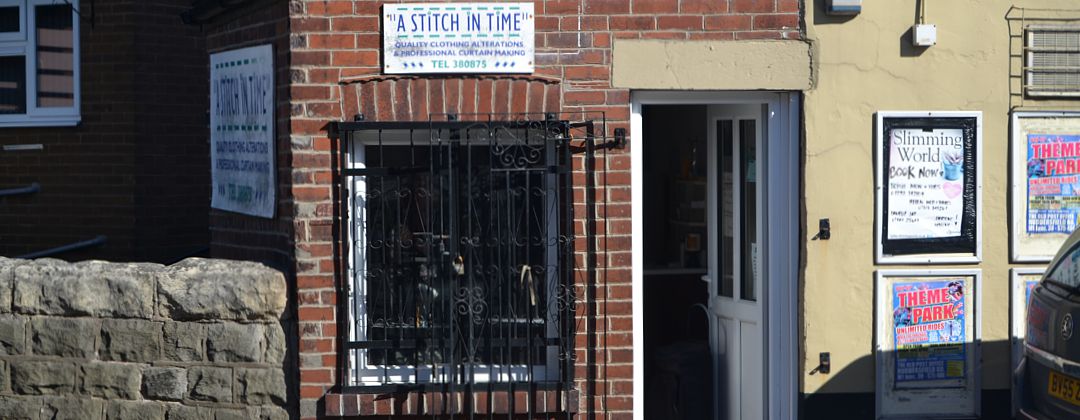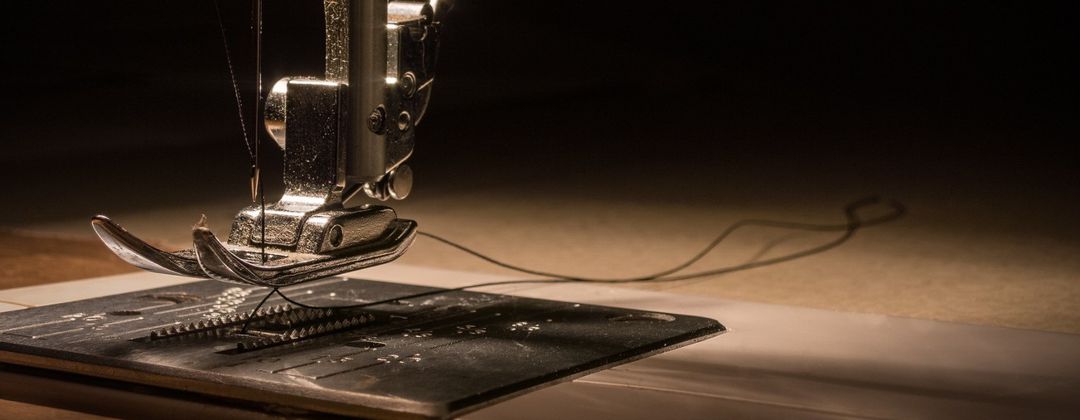A Stitch in Time has more than 45 years of experience of repair works, but could there be more to this ‘high street’ service than meets the eye.
A PERSONAL CHOICE
For many the idea of repairing and reusing clothes is seen as a very personal choice. Often it is simply to repair or adjust a favourite item of clothing that makes you feel good about yourself, brings back memories or makes it suitable for the next function or event. And for quality clothing it can often be seen as the cheaper option.
There is, however, a booming market in second hand designer clothes which, for a nominal spend, can be adjusted to fit almost any waist line or figure and make the wearer feel on top of the World.
But, there is a much more serious element to recycling old clothes and fabrics. Whilst a newly adjusted item may make you feel ‘on top of the World’, the recycling of clothes can actually help save the planet.
WASTE (NOT WAIST) MANAGEMENT
The UK is the fourth largest producer of textile waste in Europe. According to a new study, each Brit will dump into landfill sites more than 3kgs (6.6 lbs) of textiles per person every year, of which more than half is fashion waste. The study then claims that, as an average, each British Consumer will spend another £980 just to replace them.
Important Reasons to Recycle Your Clothes.
Reduce, reuse, recycle—for many years we’ve been advised about recycling. Even the councils provide us with Blue Bins for paper and cardboard, Brown Bins for bottles and plastics and Green Bins for garden waste. However, reusing and recycling textiles is equally as important. Today, people shop more and buy more clothing than ever before. They have become more affordable with the ‘pile them high and sell em cheap’ approach to retailing. The issue is, this fast fashion industry and these overstuffed closets have resulted in our landfill sites bursting at the seams.
So, to begin with look at reusing or repairing clothing, curtains, cushions etc. through the likes of A Stitch in Time. If not, then use one of the many clothing bin stores distributed around the borough in car parks and other outlets. If you don’t want it – pass it on to the professional recyclers who do. The majority of old clothes and shoes can be reused, either as second hand clothes and, even if not in this country, they will be shipped to third world countries who would greatly benefit from your ‘cast offs’. Other than that, old clothes can also be used to help in the production process of new clothes.
Reduce Green House Gases – The process of producing new clothes and textiles requires a high amount of energy. Every item goes through a complex manufacturing process that relies on electricity, water, dyes and chemicals as well as other energy sources. Recycling clothes saves energy by reducing or eliminating the need to make materials from scratch. Similarly, if you reduce the demand for new clothes then you’re also helping to reduce the volume of “fast fashion” that the ‘high streets’ want you to consume to put money into their pockets.
Secondly, chose clothing that is made from organic materials such as cotton and linen. These are generally biodegradable. The only downside is that when they end up in landfill sites, the items get buried and so lack the oxygen needed for these materials to break down. Instead, they have to decompose. This means that microorganisms break down the organic matter, which themselves produce byproducts such as methane. This gas then escapes into the atmosphere which helps towards global warming.
On top of that, there is the environmental cost of handling the product. At the front end there is the handling of raw materials, manufacture, delivery of items to the shops (or to your door), storage, display, advertising and much more. At the rear end there is the cost of waste handling, door to door collection of waste bins, sorting materials and then delivering to either the recyclers or the landfill sites.
Reduce Landfill Demand: Quite simply, clothes that don’t get dumped don’t end up filling our landfill sites. For this reason, we’re saving space. These sites cause harm in various ways impacting not only our environment, but also on our financial budgets for local councils. When we recycle clothes and other items, we play a part in reducing landfill costs for all towns and cities, which uses the council’s budgets that could be used more productively elsewhere.
It’s not all bad.
One of the main reason people choose to recycle clothes is because it helps on two accounts. In this first instance, free donations to charity shops can help good causes such as Hospices, British Heart Foundation, PDSA and much. You can quite literally target your support to the charity shop of your choice. In addition to that, it can provide the less well off with access to modern fashion, quite often at a fraction of the price. However, there is still a greater demand for the higher end fashion which has been looked after and cared for, than a garment that can be purchased for less than a ‘fiver’ off the high street.
Reduce Consumerism:
There is a well known saying ‘buy cheap – buy twice’. But in today’s consumer sector, many outlets build there whole marketing strategy on the fact that people want to change their fashion faster than the four seasons. In fact, for as long as fashion has been in business, it has been built on their Winter, Spring, Summer and Autumn range by all of the leading designers of the World. Recycling to the fashion industry could be seen as a ‘dirty word’ for no matter how many £10’s, £100’s or £1,000’s you’ve spent on a Seasonal outfit, net year they don’t want to see it again!
Simplicity:
One of the most important reasons to recycle your clothes is because of how simple it is. Repairing and adjusting quality clothes (and other fabrics) is not difficult, although our consumer habits is making ‘repairs and needlework a ‘bygone craft’. Although people can handle a needle and thread for the most basic repairs, very few people would know how to use a sewing machine, let alone own one. This is why businesses like ‘A Stitch in Time’ are so important. And to actually have one on your High Street is a luxury many communities would love to have.
Other than that, donating your clothes takes only a few seconds more than it does to throwing them in the Grey Bin. Think about how much you’re helping the planet when you take them to a recycle centre or charity shop. Or look out for the charities that not only drop off the bags through your letterbox, but will actually call around to pick up the clothes from your doorstep.
Best Ways to Recycle Clothing
Repair, adjust and rejuvenate some of those better quality clothes, curtains, cushions etc through ‘A Stitch in Time’.
Donate your unwanted garments and help others in the process!
Turn old clothing into cleaning rags and reduce your demand for disposable wipes.
Use materials for crafting purposes, and if you’re not a crafter, lend the items to someone you know who is.
Look up other textile recycling programs. For example, Nike has a Reuse-A-Shoe program where they’ll take worn-out athletic shoes, grind them up, and use them to create playgrounds, courts, and more
See if the clothes can be composted. Items that are 100 percent cotton can be composted—shred them finely, remove any attachments, and add it to your compost pile.
The Saying ‘A Stitch in Time …… Saves Nine’ is an 18th century proverb and is believed to refer to the fact that if you carry out a repair with a single stitch early, it will save you from having to do nine stitches later on. Could the 21st Century equivalent be that ‘A Stitch in Time …… Could Save the Planet!’



